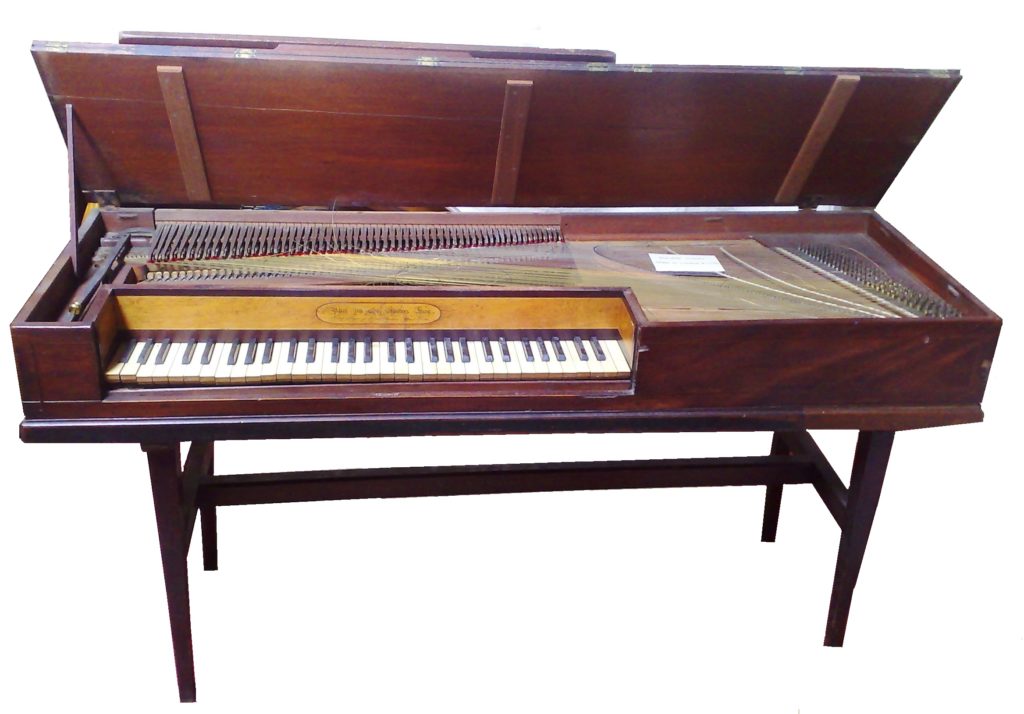Thomas Bates & Co. 1793
Description

| Date: | 1793 |
| Origin: | London |
| Serialnumber: | 178 |
This square piano by Thomas Bates is an example of Bates’ long traditional style of piano making until the 1790s. While other piano makers at this time tried to develop the piano with an extended compass or “modern” designs Bates continued in the tradition of the 1770s and 1780s.
The case of the instrument is made of solid mahogany and decorated with decorative ribbons. The original trestle stand on which the instrument rests is also made of mahogany. Inside there are two hand stops for controlling the dampers and lute. The keyboard is made in ivory and ebony and the instrument is double strung with leather covered hammers and has a single action.
The nameboard is signed with:
“Bates and Co. Londini Fecit
Corner of Edward Street Wardour Street 1793″
The handwritten serial number 178 is behind the nameboard and also on the action. Another handwritten signature is on the last key.
Thomas Bates was an apprentice with John Geib and was later one of the most renowned instrument makers in the 18th century in London and was mainly known for building harpsichords.
In January 1793 he took over the business of George Garcka and worked with Longman and Housten together. Housten took over the company after the bankruptcy of Bates.
Other preserved instruments by Thomas Bates:
- 1793 square piano (No.?) – Finchcocks Collection Richard Burnett, Goudhurst UK
- 1793 square piano (No. 163) – Private Collection England
| Length: | 157,4 cm |
| Width: | 54,4 cm |
| Height: | 20 cm |
| Circumference: | 5 octaves FF – f3 |
| Mechanics: | single action |
| Pedals: | 2 handstops - dampers and lute |
| Signature: |
„Bates and Co. Londini Fecit Corner of Edward Street Wardour Street 1793“ |

